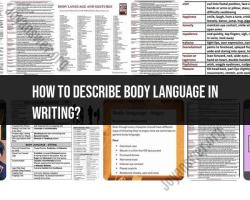What are the basic mechanics of writing?
The basic mechanics of writing refer to the fundamental rules and conventions that govern the technical aspects of written language. These mechanics ensure clarity, consistency, and standardization in written communication. Here are some key components of the fundamental mechanics of writing:
Spelling:
- Use correct spelling for words. Typos and misspellings can detract from the professionalism of your writing.
Grammar:
- Follow grammatical rules to construct sentences properly. This includes subject-verb agreement, proper use of tenses, and correct sentence structure.
Punctuation:
- Use punctuation marks appropriately to indicate pauses, endings, and separations in sentences. This includes commas, periods, colons, semicolons, dashes, and more.
Capitalization:
- Capitalize the first letter of sentences, proper nouns, and titles. Be consistent in your capitalization style throughout your writing.
Paragraphing:
- Organize your writing into paragraphs with each paragraph focusing on a specific idea. Indent the first line of each new paragraph.
Quotation Marks:
- Use quotation marks to indicate direct speech, dialogue, or to enclose titles of shorter works (e.g., articles, short stories).
Apostrophes:
- Use apostrophes to indicate possession (e.g., the cat's tail) and contractions (e.g., it's for "it is").
Hyphens and Dashes:
- Use hyphens to join words in compound words and phrases. Dashes can be used for emphasis or to set off information within a sentence.
Numbers:
- Follow a consistent style guide for expressing numbers. Typically, spell out smaller numbers and use numerals for larger ones, but this can vary depending on the context and style.
Italics and Underlining:
- Use italics or underlining to emphasize or indicate titles of longer works, such as books, movies, or plays.
Abbreviations and Acronyms:
- Define and use abbreviations and acronyms consistently. Provide the full form upon first use, followed by the abbreviation or acronym in parentheses.
Consistent Font and Formatting:
- Use a consistent font and formatting style throughout your document. This includes font type, size, and line spacing.
Parallel Structure:
- Ensure that elements in a series or list are grammatically parallel in structure. This creates a balanced and harmonious sentence.
Active Voice:
- Prefer the active voice over the passive voice for more direct and engaging writing. The active voice typically follows the subject-verb-object pattern.
Conventions of Genre:
- Be aware of and adhere to the specific conventions of the genre or type of writing you are working on, whether it's an essay, a report, a story, or other forms.
Understanding and applying these basic mechanics of writing helps create a polished and professional piece of writing that is easy to read and understand. Additionally, consistent adherence to these rules contributes to effective communication and establishes credibility as a writer.
How do grammatical structures and syntax contribute to effective writing mechanics?
Grammatical structures and syntax form the very backbone of effective writing mechanics. They act as the building blocks and blueprints, ensuring your message is conveyed accurately, efficiently, and with impact. Here's how they contribute:
1. Precision and Clarity:
- Sentence structure: Different sentence structures, like simple, compound, complex, and compound-complex, allow you to emphasize certain points, create variety, and control the pace of your writing. Varying sentence length and structure prevents monotony and keeps your reader engaged.
- Parts of speech: Using the correct parts of speech (nouns, verbs, adjectives, adverbs, etc.) in the right places allows you to express precise relationships between ideas. Misusing or misplacing parts of speech can lead to confusion and ambiguity.
- Tense and agreement: Consistent and correct use of verb tenses and subject-verb agreement ensures clarity and prevents misinterpretations about time and relationships between elements in your sentences.
2. Flow and Coherence:
- Sentence patterns and parallelism: Using similar sentence patterns, such as parallelism, creates a sense of rhythm and coherence, guiding the reader's eye and emphasizing key points.
- Transitions and punctuation: Transitions and punctuation marks like commas, semicolons, and colons act as signposts, showing how sentences and ideas connect and relate to each other.
- Clause and phrase variation: Combining independent and dependent clauses, and using different types of phrases, adds variety and depth to your writing, preventing a monotonous drone.
3. Emphasis and Tone:
- Sentence length and structure: Short, punchy sentences can create emphasis and urgency, while longer sentences can build suspense or convey complex ideas.
- Word choice and figurative language: Precise word choices and well-placed figurative language (metaphors, similes, personification, etc.) add vividness, emotion, and nuance to your writing.
- Sentence placement: The order of sentences within a paragraph can influence how readers interpret information and build emotional impact.
Mastering these aspects of grammar and syntax elevates your writing from basic communication to a craft. It allows you to wield language with precision and nuance, ensuring your message resonates with your reader, whether you're informing, persuading, or entertaining. Remember, effective writing mechanics are not just about avoiding errors; they're about harnessing the power of grammar and syntax to express yourself with clarity, coherence, and impact.













